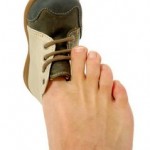Resource:
2012 Freelance Industry Report

- Links: Website | Twitter | Facebook | International Freelancers Academy
- Tags: Business Models, Entrepreneurship, Freelance, Report
Despite the meteoric growth in freelancing over the last decade, there is very little published information about who we are as freelancers — what we do, how we land work, what we earn, and why we do what we do…
In this free report…you’ll discover:
- The biggest challenges freelancers face and how those challenges differ by profession, location, experience and other factors.
- Attitudes toward freelancing, the economy’s impact on freelance work, and freelancers’ business outlook for the next 12 months.
- Income trends, hourly rates, billable time, and how different freelancers price their services.
- Lifestyle choices, including average hours worked, the importance of free time and flexibility, and attitudes toward reentering the traditional workforce.
- How freelancers attract clients today, how much time they spend promoting their services and what marketing strategies they’re planning to implement over the next year.
- An analysis of displaced workers who have given up their job search in favor of the freelance path: what challenges they face, how they feel about self-employment, their lifestyle changes and their likelihood to remain self-employed.
- How freelancers contribute to economic growth, and how entrepreneurially minded freelancers perform against those who don’t consider themselves to be entrepreneurs.”
Source: 2012 Freelance Industry Report
This report is filled with meaty goodness and covers all aspects of being a freelancer. A few data points that caught my eye:
Of those who responded to the survey, 71% were women
This is an easy one: freelancing gives women more flexibility no matter what their age. I started freelancing part-time in 1998 so that I could be at home with my son. Now that he’s older I can work full-time; however, many women my age are now stuck taking care of aging parents AND their kids/families. Freelancing gives women the flexibility they need to juggle these responsibilities.47.2% of freelancers are primary income earners
I found this data point very encouraging. It means we can earn enough to support ourselves and our families. It also means freelancers don’t have to buy into the the image of the starving artist living in a garret mentality.What I’d love to know is how many women freelancers are primary income earners. Knowing this would give more women the encouragement to go out on their own after the loss of a spouse due to divorce or death — or those who have a spouse who can’t work due to injury / illness.
30.4% of freelancers spend less than 2 hours a month prospecting for clients
This one made me go WOW!! As in OMG WOW! How do you stay in business if you’re not marketing? Well, actually, you don’t. Wow.”
The Journalism Accelerator is not responsible for the content we post here, as excerpts from the source, or links on those sites. The JA does not endorse these sites or their products outright but we sure are intrigued with what they’re up to.










Weigh In: Remember to refresh often to see latest comments!
0 comments so far.